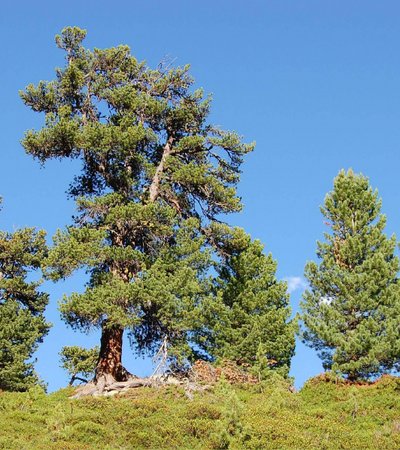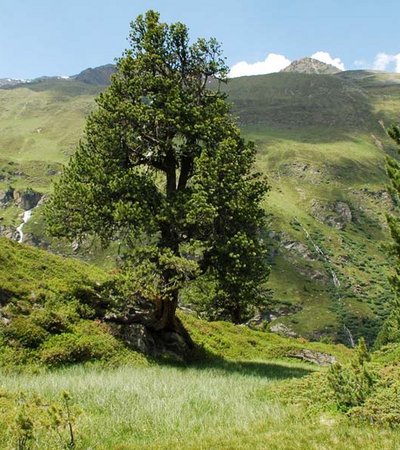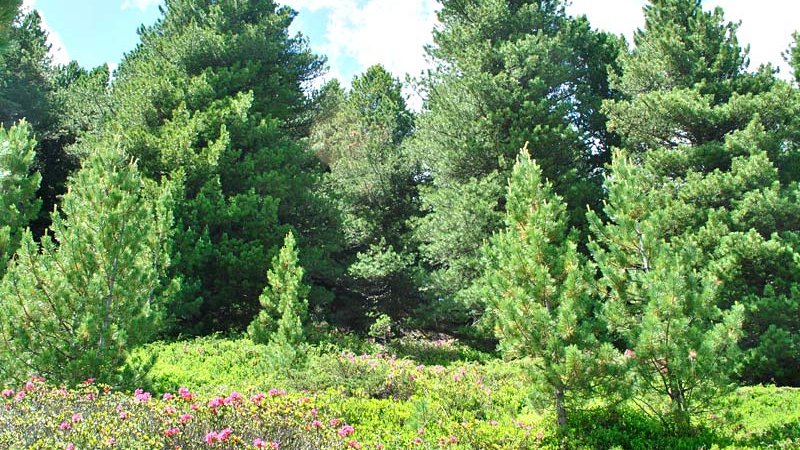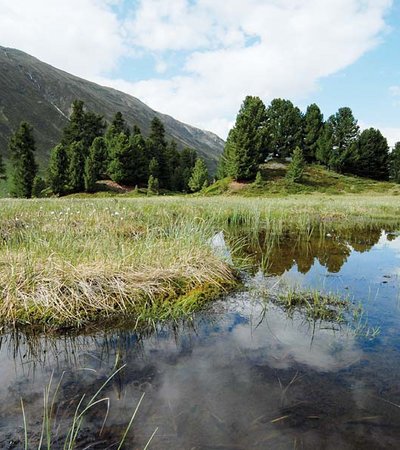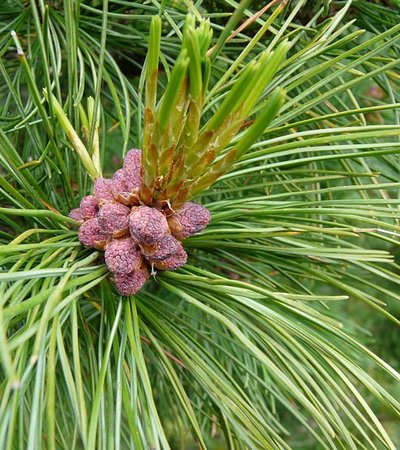(Pinus cembra)
Distribution/habitat
The primary distribution area of the Swiss pine is in the Central Alps, a smaller one is found in the High Tatras and the Carpathians. It is found around the tree line, in high subalpine larch-pine-forests. In inner Ötztal, Swiss pine is found at up to more than 2,300 m altitude.
Description/characteristics
The needles of the Swiss pine stand at five each and are triangular in profile. The cones fall off after the seeds, the tasty ”cembra nuts”, mature. Propagation takes place courtesy of the nutcracker (Nucifraga caryocatactes), which buries the nuts as winter stocks. On not too steep, shady slopes, the Swiss pine can easily reach heights up to 25 m. Its word is very precious, used in cabinetry and woodcraft.
Special features
The Swiss pine is a shade-intolerant tree species, but does not have any special requirements on bedrock or precipitation amount. Young pines sprout on raw humus and grow very slowly. It reaches a very high age of up to 1,100 years. The old Swiss pines in the Obergurgl pine forest, however, are “only” 300 to 400 years old. At lower elevations, the Swiss pine is not very competitive against other tree species and is thus not found.
Endangerment/protection
Due to clearing, larch-pine-forests have been strongly decimated over the centuries. Reforestation efforts were able to somewhat compensate for the losses. The Swiss pine is not protected in Austria.
Literature
Reisigl, Herbert & Keller, Richard (1999): Lebensraum Bergwald. Alpenpflanzen in Bergwald, Baumgrenze und Zwergstrauchheide. 2. Auflage. Spektrum Akademischer Verlag, Heidelberg - Berlin. 148 p.





 Natur im Fokus "Zirbe"
Natur im Fokus "Zirbe"
